
Birding Around Las Vegas, Favorite Places Far Away

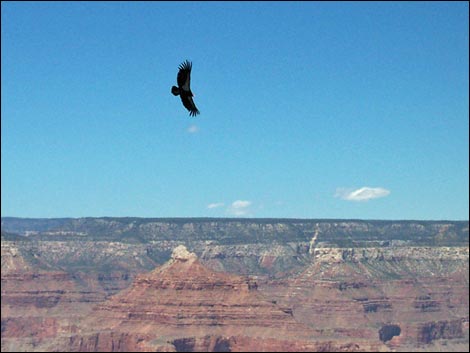 California Condor soaring over the Grand Canyon |
Overview Imagine this: It is a warm and sunny day at the Grand Canyon; you are sitting comfortably on a shady stone wall with your feet dangling (safely) over the edge of the canyon; you are quietly eating ice cream or sipping a latte while fending off hopeful rock squirrels; people around are busy but quiet. Suddenly they look up in unison and give out a yelp. You look up as a California Condor soars by just above your head -- close enough to hear the wind in its wings. So what if you can't put it on your life list. Link to map. Another good place to watch for condors is Navajo Bridge over the Colorado River on Highway 89A between Jacob Lake and Page, Arizona. The birds like to sit on the wall of the canyon below the bridge. |
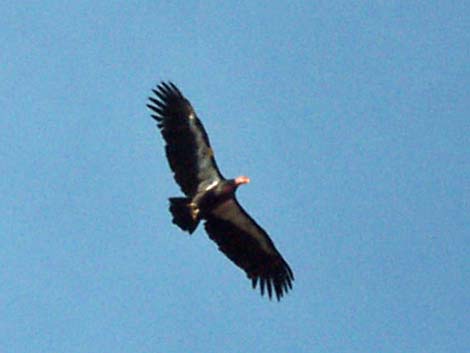 |
Description In an effort to bring California Condors back from the brink of extinction, captive-raised condors were released into the wild at the east end of the Grand Canyon. The program has been successful, and condors are starting to nest on the canyon walls and in the surrounding region. Oddly, however, the condors seem to like something about human activity, and they have been roosting in one of the busiest places in the canyon -- just below the Bright Angel Lodge. Fortunately, this odd behavior provides an outstanding opportunity to see them up close and personal. Look for condors on the rocky outcrops just below the back porch of the Bright Angel Lodge. The view from the Gift Shop, just west of the Lodge, sometimes is better, depending on exactly where the birds are sitting. |
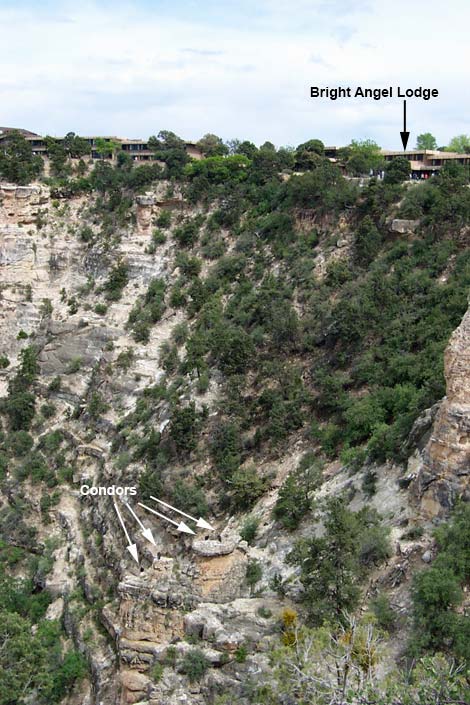 Condors on cliffs below the Bright Angel Lodge |
The primary feature of the park is the 4,500-foot-deep canyon cut by the Colorado River and the resulting scenic vistas. The South Rim, at an elevation of about 7,000 feet, is in the mid-elevation pinyon-juniper, yellow-pine forest zone. The river, at an elevation of about 2,500 feet, is in the low-elevation Mojave Desert Scrub zone. The great range of elevations makes for a mix of habitats, providing for considerable floral and faunal diversity, and the birding can be good for desert and forest species, plus many migrants. When you are satiated with condors, the Rim Trail makes for a nice walk along the edge of the canyon with opportunities to find forest species. From the Bright Angel Lodge, walk in either direction to a bus stop, and then ride the shuttle bus back to your car. The hike to the west goes up a fairly steep hill, so you might consider riding the Hermit Rest shuttle bus (starts just west of the Bright Angel Lodge) to the Maricopa Overlook (2nd stop) and walking back to the Bright Angel Lodge on the paved trail, or just walk east along the rim on a fairly level, paved trail. Because of the crowds on the South Rim, the Park Service established a shuttle bus system. The entrance fee includes the shuttle bus, so after you get to the South Rim, park your car and ride the bus for free. Location The Grand Canyon is located in north-central Arizona, about 4-1/2 hours east of Las Vegas. From Interstate-40, drive north from Williams on Highway 64 or drive north from Flagstaff on Highway 180. When the two highways converge, follow Highway 64 north to the park entrance. Inside the park, find a place to park and ride the shuttle (May through September) to the Bright Angel Lodge. From the bus stop, walk out to the back porch of the Bright Angel Lodge. |
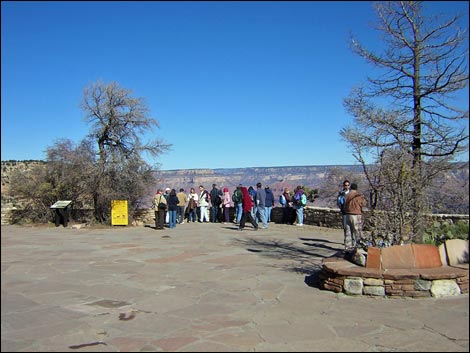 Looking down on condors (view off back porch of Bright Angel Lodge) |
Hours The Park is always open. The South Rim Visitor Center is open 8 AM to 6 PM, 7 days a week during the summer, with shorter hours during the rest of the year. Fees The entrance fee is $25 per vehicle, which includes the shuttle bus and is good for a week. Camping is an extra $18 per site per night. Various park passes are accepted. Check the park website for current fees. |
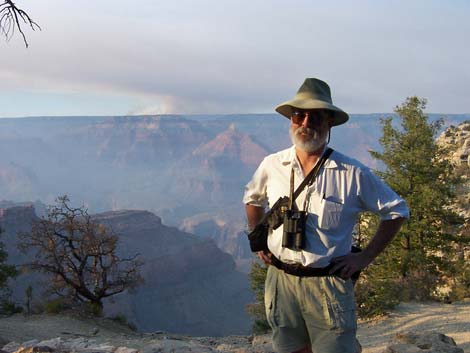 Don't forget to bird the forest along the paved Rim Trail (view north). |
Specialties California Condor, Turkey Vulture, Peregrine Falcon, Common Raven, House Sparrows, and migrants in season. For more information For details on these issues and other information, visit the official Grand Canyon National Park website. Maps are also available online. |
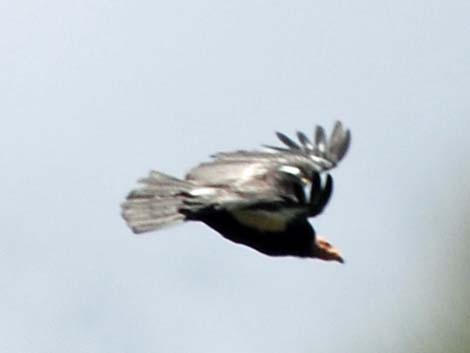 |
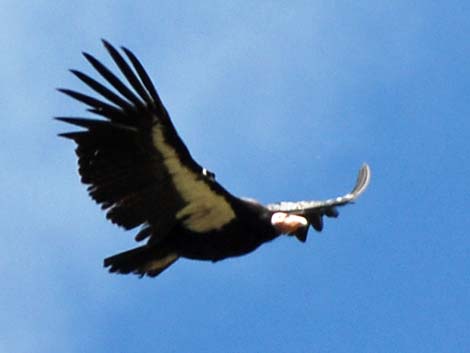 |
Happy birding! All distances, elevations, and other facts are approximate.
![]() ; Last updated 240322
; Last updated 240322
| Favorite Places Far Away | Birding Around Las Vegas | Glossary | Copyright, Conditions, Disclaimer | Home |